Norwich Market |
|
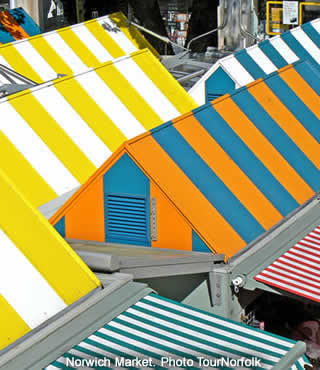 |
|||
One of England's largest and most historic markets, surrounded by attractive buildings |
||||||
|
||||||
The Saxon market was situated in Tombland, but after the Norman Conquest of 1066 the market was moved here, in an area known as "Mancroft", to give it more space. By 1300 the market had grown substantially and sold vegetables, fish, meat, bread, cloth, shoes, rope, livestock and many other commodities; all from their own designated place. A small area was kept for the use of outsiders who brought in produce from the surrounding county for sale on market days. |
||||||
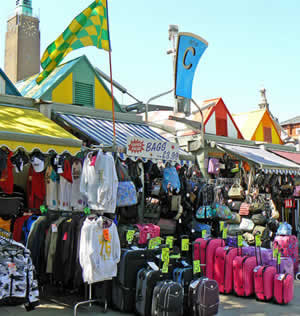 Stalls on Norwich Market |
||||||
By the late 17th century the market was becoming so congested that a new site for livestock sales had to be found, and in 1738 the livestock market was moved to an area near the castle, where it remained until 1960. In the 1930s the whole market place was redesigned to accommodate the new City Hall, and was opened in 1938. |
||||||
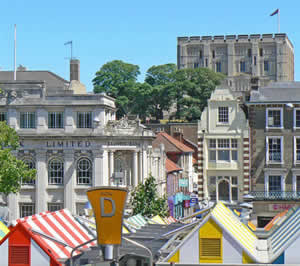 Norwich Market in the shadow of the Castle |
||||||
Today, Norwich Market remains one of England's largest and finest open air markets. The market is open Monday to Saturday, with around 200 traditional stalls covered with a canopy of stripped canvas. |
||||||
4 Interesting Buildings Around the Marketplace |
||||||
1. The Guildhall |
||||||
Situated above Norwich market place, Norwich Guildhall replaced the long-standing toll-house; a small thatched building used for collecting the toll from the market, and dating from the 13th century. The Guildhall was used as a civic hall and stored many important civil records. Holding court sessions, it acted as the centre for local government, politics and civic affairs until the opening of City Hall in 1938. The building was also a prison and was used as a cloth hall, while another area stored the city’s fire engines. The exterior of Norwich Guildhall provides an excellent example of the flint work that the city is so famous for. The east side was crafted from alternate squares of faced flint and ashlar stone, giving the building its chequered effect. This spectacular technique was a clear reflection of the city’s growing size and wealth. |
||||||
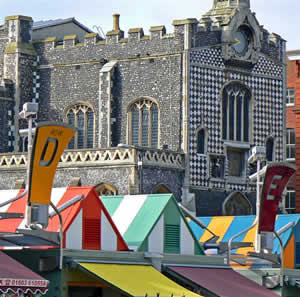 Norwich Guildhall, adjacent to the Marketplace |
||||||
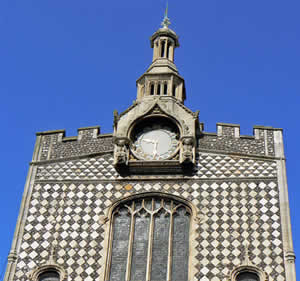 Chequered flint work |
||||||
2. City Hall |
||||||
Norwich City Hall was built as a response to a growth in local government duties; the Guildhall had become cramped and unworkable. City Hall was made from solid brick walls of Clipsham stone for the lowest storey, while Ketton stone was used for the majority of the remaining outside work. The building was opened in 1938 by King George VI to the largest gathering of citizens the city had ever seen. The hall has an art deco interior, which is spread over five floors. The walls of the ground floor entrance hall and the main landing on the first floor were lined with Italian marbles, while many of the rooms were panelled with rich mahoganies and other quality woods. City Hall boasts a wealth of artistic details, clearly shown with the heraldic lions outside the building. City Hall holds the largest clock bell in the UK, with the deepest tone in East Anglia. It is also home to the longest balcony in England, at 365 ft long. |
||||||
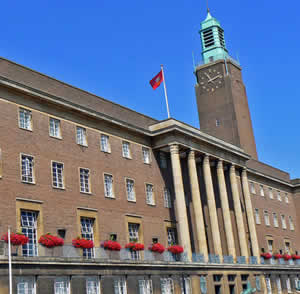 City Hall |
||||||
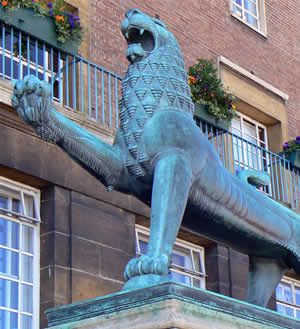 One of the lions outside City Hall |
||||||
3. The Forum |
||||||
The Forum was built to mark the Millennium in Norwich. The site was previously home to Norwich Central Library, which was destroyed by fire in 1994. While many of the books were destroyed, the archives held in the basement remained largely in tact. The Forum has a number of diverse and interesting uses. A centre for entertainment, the building hosts a range of events, businesses and organisations that are open to the public. The Forum houses a state-of-the-art public library and the American 2nd Air Division memorial library. The Forum is also home to BBC Look East and Radio Norfolk, as well as offering a library, coffee shop, restaurant and tourist information. |
||||||
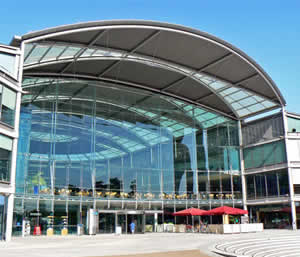 The Forum |
||||||
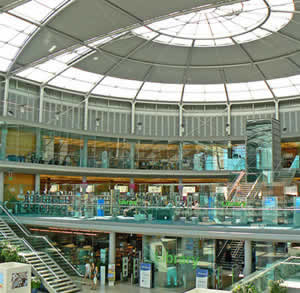 Inside the Forum |
||||||
4. St Peter Mancroft |
||||||
St Peter Mancroft is a beautiful parish church situated in the centre of Norwich, sandwiched between the Forum and the Marketplace. It has a Norman foundation, the first church building having been constructed here in 1075, dedicated to St Peter and St Paul. The building fell into disrepair however, and was replaced with the current building during the 15th century. At the time of the Reformation the two Saints Peter and Paul were given independent Saints' days and the Church's name was changed to St Peter Mancroft. The word Mancroft is Latin, meaning Great Meadow, and refers to the area where the market now stands, which was once an open meadow in the shadow of the Castle. Inside the church has many interesting features, including the great east window, elaborate font, modern organ, treasury and hammer beam roof. |
||||||
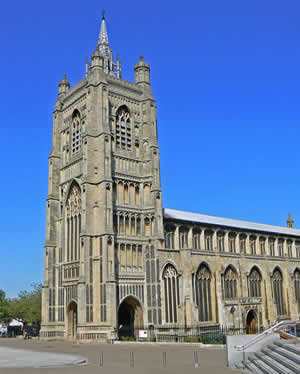 The tower of St Peter Mancroft |
||||||
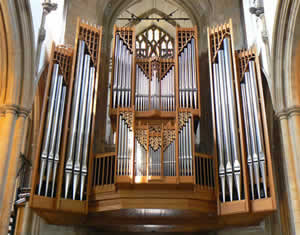 The massive modern Organ |
||||||
|
||||||
Norwich Tourist Information Centre, The Forum, Millennium Plain, Norwich, NR2 1TF. Tel: 01603 213 999 |
||||||
Car-parking can be found at the Forum (pay) or St Andrew's (pay). |
||||||
|
Pocket Britain is optimised for use on a smartphone or tablet with internet access. All content is subject to copyright. All reasonable methods have been used to ensure information supplied is accurate at the time of publication. However, it is advisable to check information before relying on it. Privacy Policy |